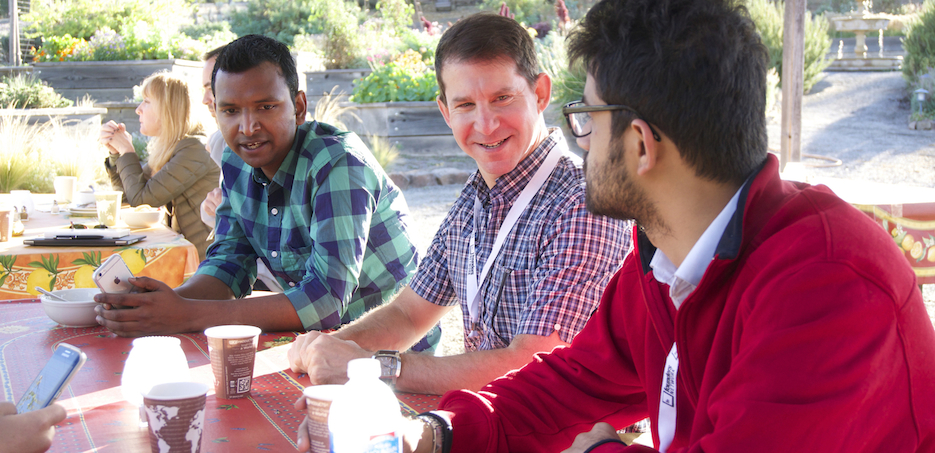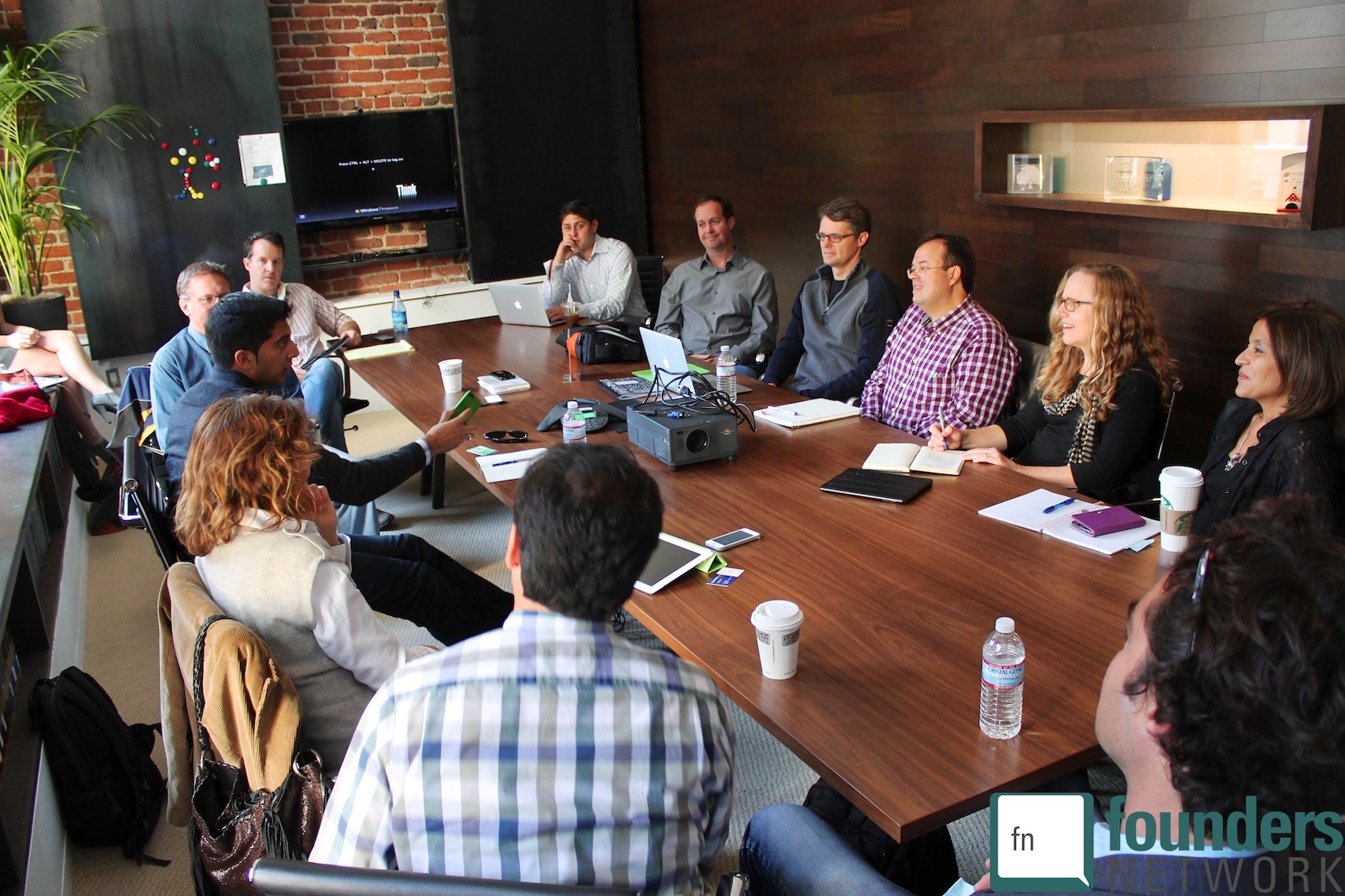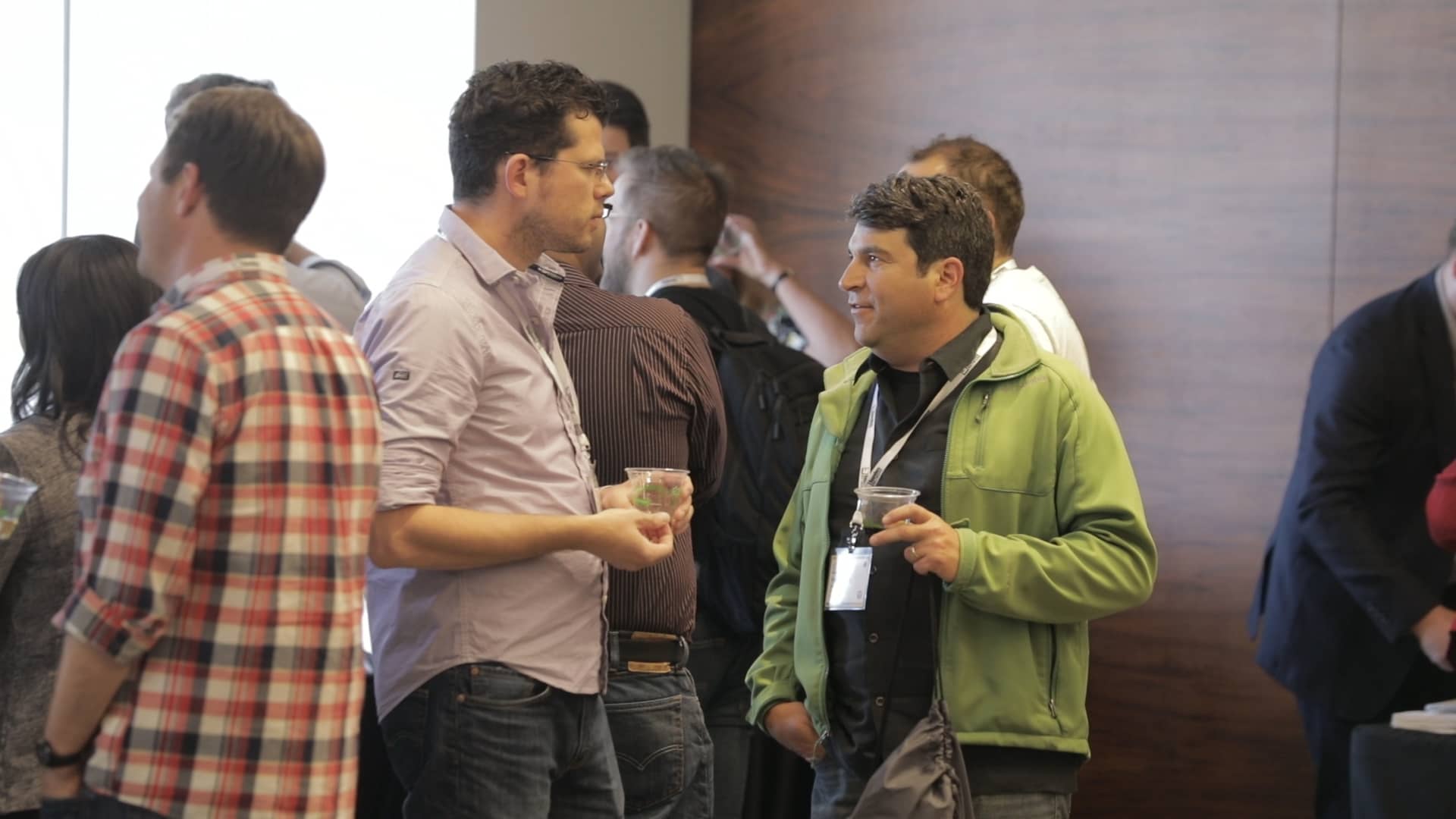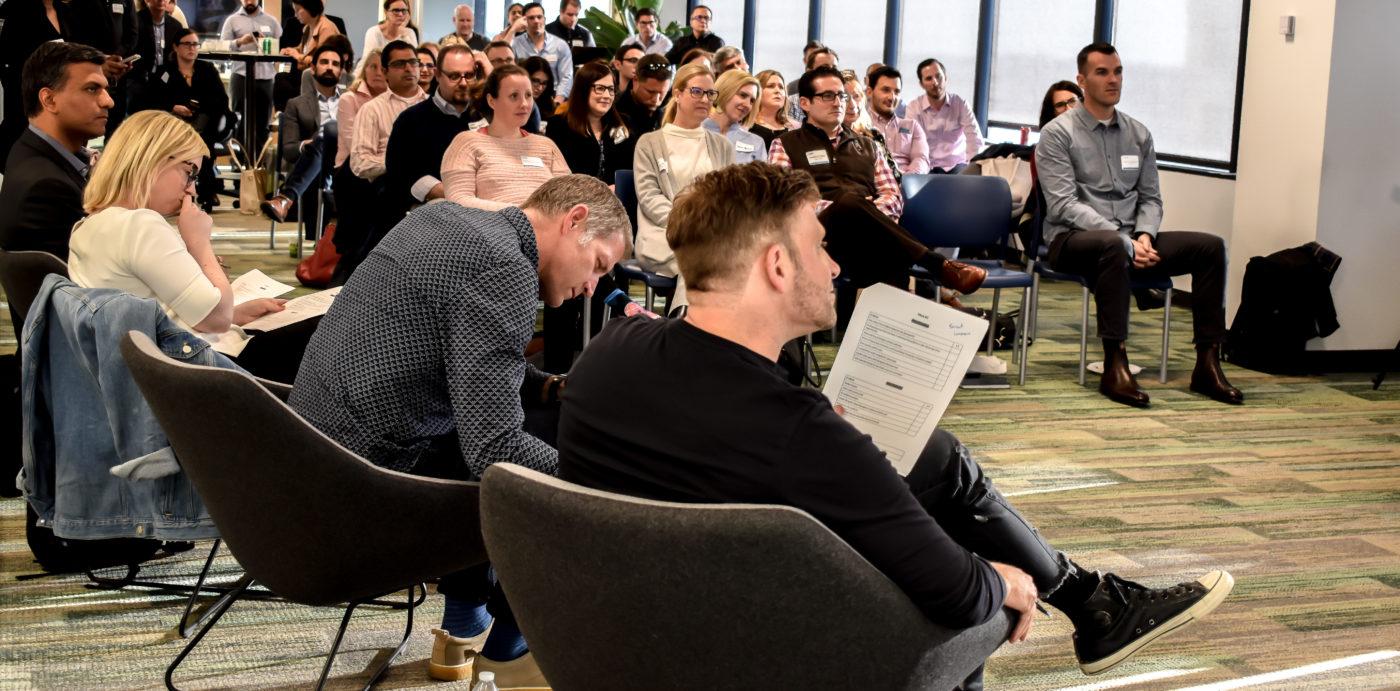
A focus on funding and building dominates much of the founder-centric conversation – but without growth, you don’t have a business. Even product-focused founders are often their startup’s best sales tool. This month we asked four very different Founders Network founders what cost-effective approaches they’ve found beat the textbook growth strategies currently being buzzed about in the tech world.
Read on for six hard-learned lessons they’ve learned growing startup after startup, through successes and yes, a few shut-downs.
1. Funding isn’t traction. Neither is product iteration.
“As you’re trying to grow, there’s this balancing act between sales activities and product activities – if you get stuck in product, you’re not closing any business, and then you’re screwed,” says Joel Garcia, whose startup TidalWave offers an Online form and app builder.
Even more so, fundraising gets all the noise in startup land – but entrepreneurs focused on building a sustainable business often reverse the ratio.
“The conversation seems to be 80 percent fundraising and only 20 percent growth, and it needs to be a complete reverse.” -@airik @justunosocial
“The conversation seems to be 80% fundraising and only 20% growth, and it needs to be a complete reverse. Then we can become focused on sales, building our business and profitability,” says Erik Christiansen. He founded Justuno.com, a conversion optimization platform to create personalized promotions for a site’s individual visitors. Christiansen just took in his first external funding, but started as a revenue-based, self-funding company.
“We don’t need mass sums of money, what we need is to be very resourceful and smart. My focus is different – on sales and on building a resourceful team.”
2. Stop prioritizing an MVP – first, do your homework
“While we’re building our hardware we’re doing our homework in the background, building relationships, and really being smart so that when we’re ready we can say we’re set, let’s go,” says Christopher Ayala. He founded Vertisense, a startup developing connected sensor technologies for non-invasive measurement of human conditions, allowing users to track and monitor their personal health data.
“I wish I was a SaaS software app where I could roll out a minimum viable product and let people beat up on it, then roll out another two days later, but I can’t do that,” he says. “It takes us 7 months to create a hardware product we can then use to solve a problem.”
How does he compensate for this apparent lack of agility? He knows the landscape for which he’s (slowly) building – well enough that when he does demo for a customer, he can be pretty sure he got it right the first time.
“It’s a lot of time in meetings, going out to speak with people and really validating the solution,” he says. “I walked into one meeting with the Kansas City Police Department’s head of information services and head of the DUI task force – I was just trying to get feedback – and at the end of the meeting when I said thanks, they said ‘we should do a trial program.’ They were asking me to do this, which was totally bonkers. If I hadn’t gotten in front of them I never would have known that. Get out of the office – go validate stuff.”
“Get out of the office – go validate stuff.” -@_ChrisAyala @Vertisense
Before he created Incode Technologies earlier this year, Ricardo Amper had been a part of many bigger businesses – and he’s seen growth strategy from both sides, as a well funded but bootstrapping founder and a resourced executive. One thing he learned on the job: how important it is to really know your customer or user, before you do anything else.
“One thing I’ve done differently than most startups is my time management – and money – which proportionally, I’ve spent more on old-fashioned market research and focus groups,” Amper says. “I am all about learning and agility, but I’ve seen companies make mistakes when they just ‘launch and learn.’ There is no substitute for talking to users and quantitative research. Make sure you have data about how customers actually feel about the problems you’re trying to solve, and your proposed solution.”
“I’ve seen companies make mistakes when they just ‘launch and learn.’” -@rickyamper
He is building Incode as a product aimed at consumers who are increasingly conscious of – and concerned about – their lack of privacy and control of personal information in the digital realm. Understanding attitudes about privacy has been core to his product development process – and he sees it as inextricably related to growth and future sales, too.
“People want to launch so quickly that ok, they might learn in the process – but they will alienate their potential users, and the brand will be affected,” Amper says. “By the time you improve it and create a great brand, the users you were already in touch with will be alienated.
3) Product and growth feed each other
For Christopher Ayala, planning for future growth verticals has been a fundamental part of his development process. His startup Vertisense is developing connected sensor technologies for non-invasive measurement of human conditions, allowing users to track and monitor their personal health data. For him, a building with a multimarket strategy in mind is all about the timeline to revenue.
“You can create a consumer retail device, put it in the market and sell it relatively quickly,” he says – you can already buy his first product, Alcohoot, the world’s first smartphone breathalyzer. But the consumer market is only an early part of Vertisense’s play – and one that establishes revenue early. Enterprise sales may ultimately be bigger – that doesn’t mean they come first, or should be built first. Ayala built a platform that can serve different markets, given small tweaks.
“If we’re able to monetize an asset we have in hand today through a diff channel than the one we think has the biggest application, we’d be foolish to ignore it,” he says. “To put together a healthcare product takes a great deal of regulatory approval, process, and clinical programs.”
4) Founders are often a startup’s best sales team. Draw on your pre-founder identities to become a better seller.
Ayala had another life as a corporate attorney before he turned to entrepreneurship, so he appreciates the painful regulatory hurdles startups face in some enterprise arenas.
“We’ve targeted healthcare and law enforcement, and it’s both good and bad,” Ayala says. He’s needed his background knowledge to build credibility as demonstrated that Vertisense could go where others have not – and has already raised $4.6 million on that promise, and is in conversation with his first prospective institutional investors.
“The hurdles to get into those markets require a lot of regulatory nonsense, but if you can get over that, you ‘re going to be pretty sticky and that’s a natural barrier to entry for competitors.”
Before he started building Incode Technologies, Ricardo Amper successfully led and then sold two companies, and his experience developing those brands has made him a “true believer” in focusing on marketing from day one. For him, it can’t be separated from growth.
“90 percent of the value for the beverage company that I sold was the brand when a huge company bought us,” he says. “Even though we had a small part of the market share, we had built a brand that resonated with a very particular group of people, and that was very valuable.”
“I think it’s not that much valued in Silicon Valley, but brand is a huge thing, and is equally important to traction,” he says. “Brand is any point of touch the user or potential user has with your company, so one of the things I do differently is investing in starting to create amazing marketing at the same time we’re developing the technology.”
5) It’s painful to start building a sales team from scratch. Try focusing on how you measure the process.
Every founder has heard the stories, if he or she hasn’t seen it in person: building a sales team is really, really hard, especially as you first start to delegate from a passionate founders pitch to onboarding sales specialists who haven’t lived and breathed the product. The only solution – ‘hire the right people’ – is easier said than done. But one incremental way to identify weak links in the sales process is to measure everything.
“What I love a lot of information on is where in the process are the conversations not working – is it first pitch for the product, is it third conversation where we start talking about what the price is, or is it the fifth conversation?” says Vertisense founder Chris Ayala.
Amper, too, built a system that would capture growth data.
“We measured almost every process that the company had – every interaction that a sales rep had with a customer. If he quoted 10 products, we didn’t get 5, what were the 5 and what were the prices?”
Understanding better how to de-risk a commitment from a potential buyer requires analysis – and that takes infrastructure within a startup that can measure more than the froth of basic notes and commentary.
“We’re implementing more of a timeline reporting process,” Ayala says. “The challenge is getting the information out of the sales people, who are good at sales but not great at communicating back information.”
6) Don’t buy the hype about the latest growth model
Before starting AllCode, Joel Garcia worked at a number of startups in healthcare, enterprise software, and SaaS. He’s followed the trends in SaaS and revenue models based on harvesting large numbers of small, recurring payments.
“It’s almost a myth you can do that easily,” he says. “What I’ve found is that even if you sort of know what you’re doing, if you don’t have the connections or the rolodex to raise a lot of money a SaaS startup that will fall flat on it’s face because you can generate a couple of thousands dollars a month and that doesn’t even cover the bills.”
“I pay the sales guys a decent commission. They cold call, send people emails, it’s basically just hustling..” -@joelgarcia
He raised tens of millions of dollars in his previous enterprises but came to believe that without an in-house team of sales guys “who can actually sell stuff,” even that much wouldn’t have been enough.
“I pay the sales guys a decent commission. They cold call, send people emails, it’s basically just hustling, and taking work that may not be in other people’s wheelhouse,” Garcia says. Like most founders, he’s a salesman too, of course. Every event or conversation becomes an opportunity to connect to the next client. At least in the enterprise context, he believes that hustle on the part of the founder will beat cheaper, but ultimately anonymous, plays on social media or Adwords.
“Really what it comes down to is networking and meeting people who might want your service, and finding an appropriate opportunity to sell it to them.”
“That personal referral by being at a specific location works, and it sort of cuts through the crap,” he says. “With San Francisco being such a tech hotbed right now, that makes sense, right?”





